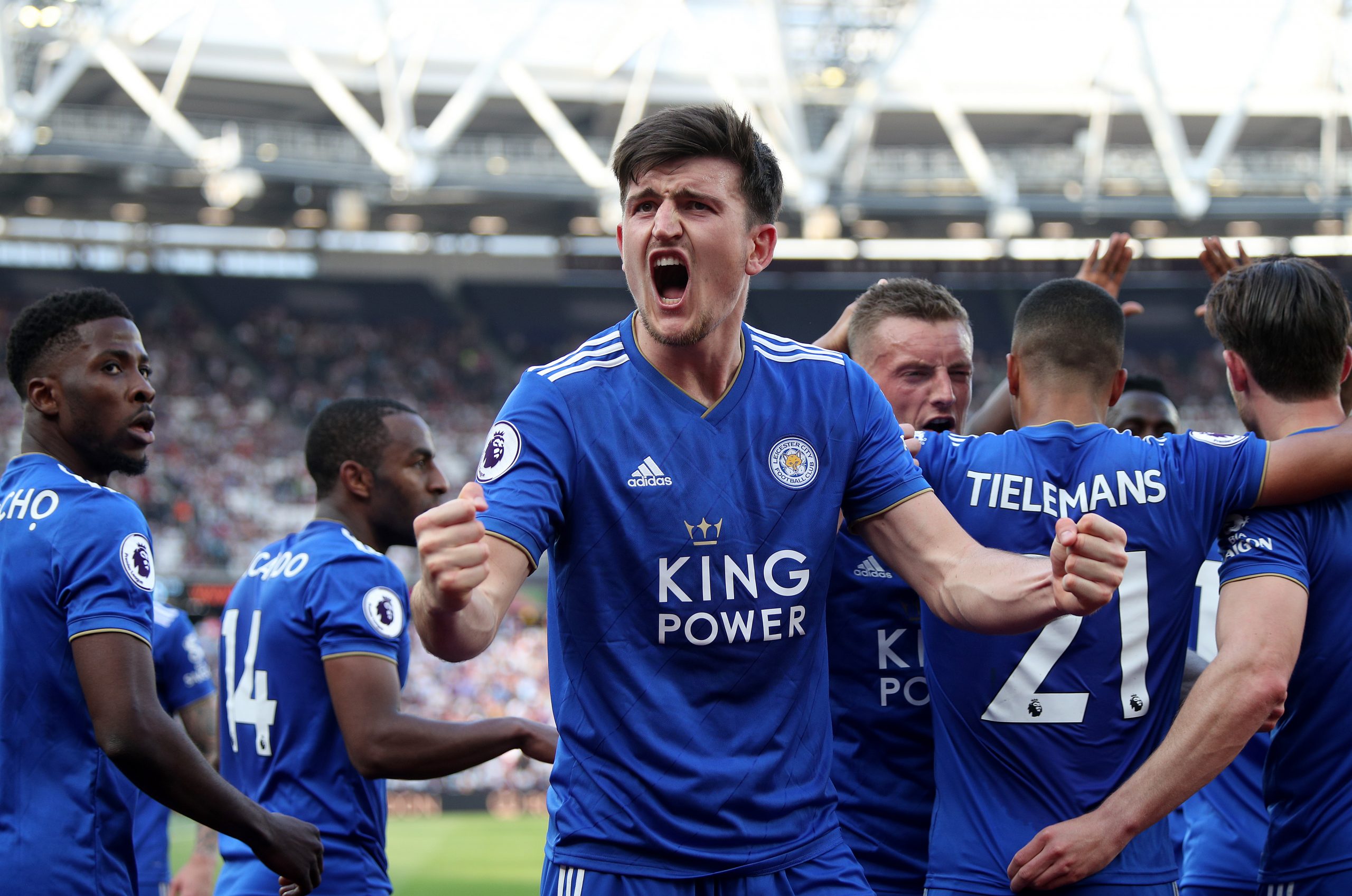Over the last couple of weeks on the site we’ve run pieces looking at how Leicester City and Wolverhampton Wanderers might ascend to the heavens of the top tier in the Premier League. The fact that both teams might have credible paths forward is a testament to just how strong the midtable in the Premier League has become.
A quick look at the table shows that behind the elite pairing of Manchester City and Liverpool, the next eight teams in the top half of the table are grouped tightly into two groups of four. Tottenham Hotspur, Chelsea, Arsenal and Manchester United are all between 70 and 65 points. Then there’s a nine point gap down to seventh place Wolves where Wolves, Leicester City, Everton and Watford are all grouped between 54 and 50 points.
That eleven-point gap looms large. It’s a break between tiers in the table that any argument for the improvement of the Premier League middle class has to contend with. Afterall, last year the gap between sixth and seventh was only nine points, with Arsenal finishing the season with 63 points, and Burnley with 54. So has anything really changed?
The answer to that is absolutely yes. For starters, the dynamics of the table are different. Arsenal’s 63 point haul from last season has already been bettered by all of the team upper tier teams this year. It is, at least, possible, that all four of the none elite top six teams will still manage to crack 70 points. The gulf between the top two and the rest is larger than its ever been, but the overall quality of the worst top six team this year, at least by points, is better than last.
So, it’s against that backdrop that we measure the improvements of the middle class. And, here too, we see improvement. Last season the seventh, eight, ninth and tenth spots finished with 54, 49, 47 and 44 points. With two games to go this season those spots are already at 54, 51, 50 and 50. So, the middle class could lose all eight games down the homestretch of the season and still get a better points total in each spot (except for seventh where Wolves would tie Burnley) than similarly situated clubs last year.
As we move deeper into the numbers, the improvements become even more stark. During the 2017-18 season, there were only seven teams with positive xG differential. It was only, surprisingly enough, 11th place Crystal Palace that joined the top six on the positive side of the ledger. The top six dominated the league on both sides of the ball. In attack, the top six teams were the top six teams.
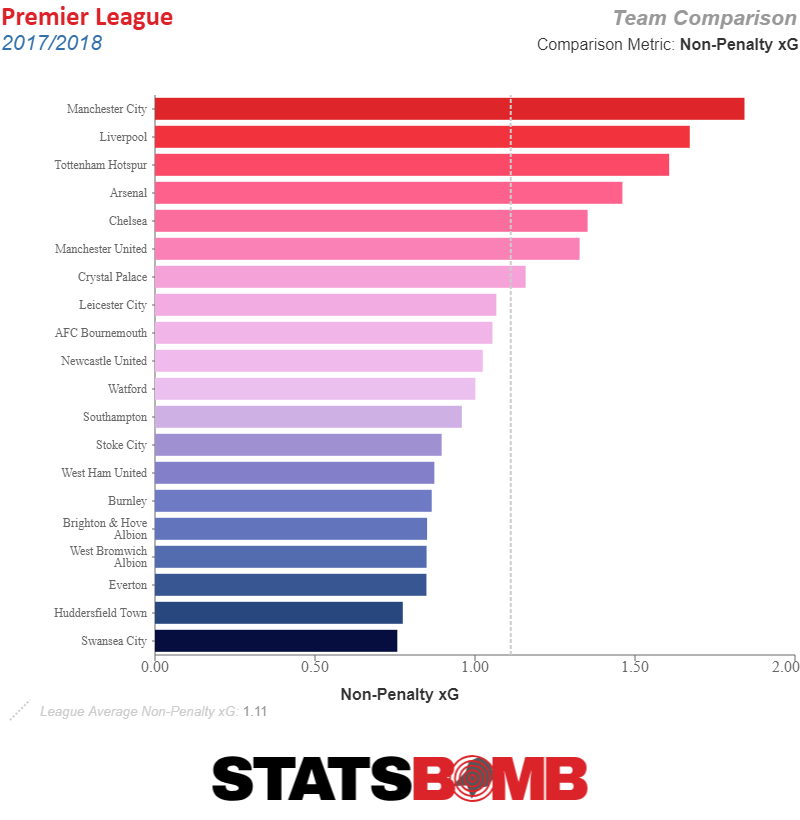
It was only very slightly more varied in defense, where seventh place Burnley managed to sneak ahead of sixth place Arsenal.
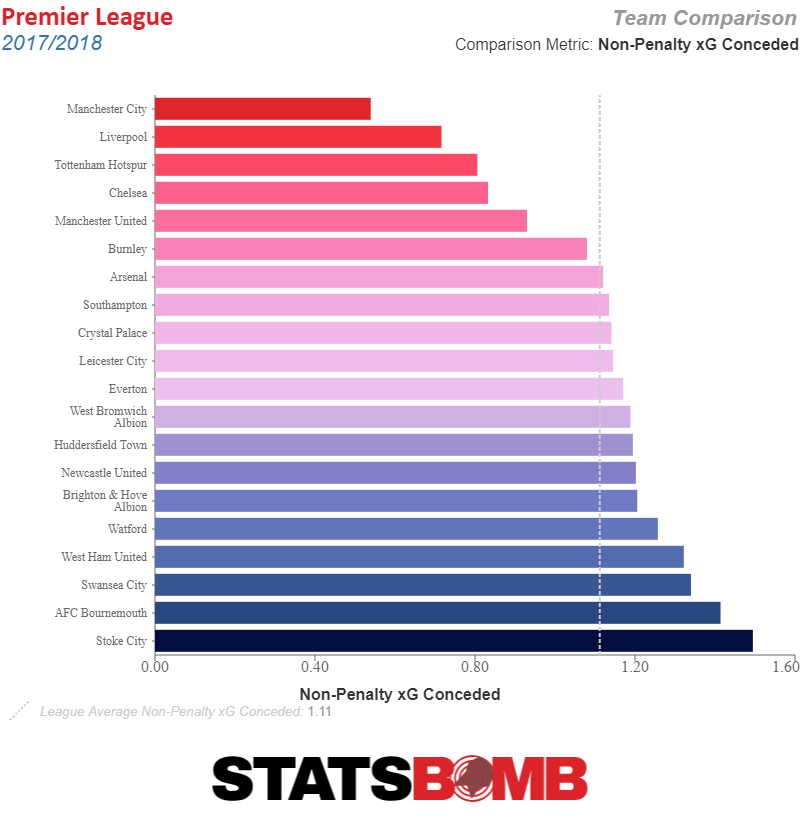
This season is an entirely different story. The entire top nine are in the xG green. Watford, tenth in the table, has recently dropped just below to -0.13 which actually places them with only the twelfth best xG difference in the league. Last season that number would have been the ninth best. Even more amazingly, Wolves and Leicester, in seventh and eighth, actually have better xG differences than Arsenal and United in fifth and sixth.
Split things by attack and defense and the lack of separation between the big six and everybody else becomes even more apparent. While the big six retain their stranglehold on the top attacking size, the difference between them and everybody else has lessened dramatically.
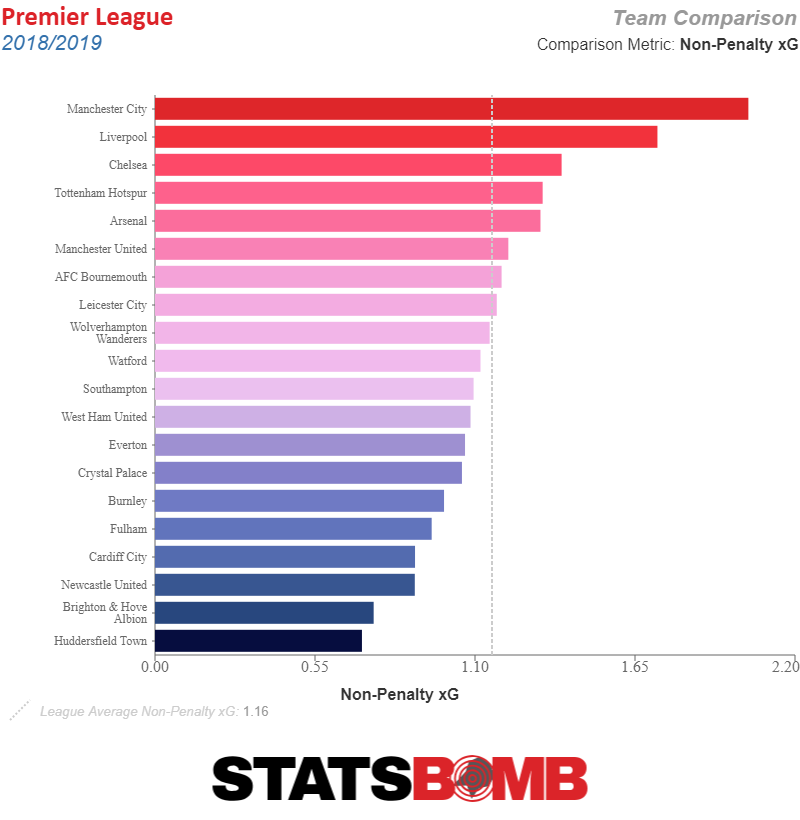
And on the defensive side of the ball. Well, you’d really be hard pressed to see a big six at all.
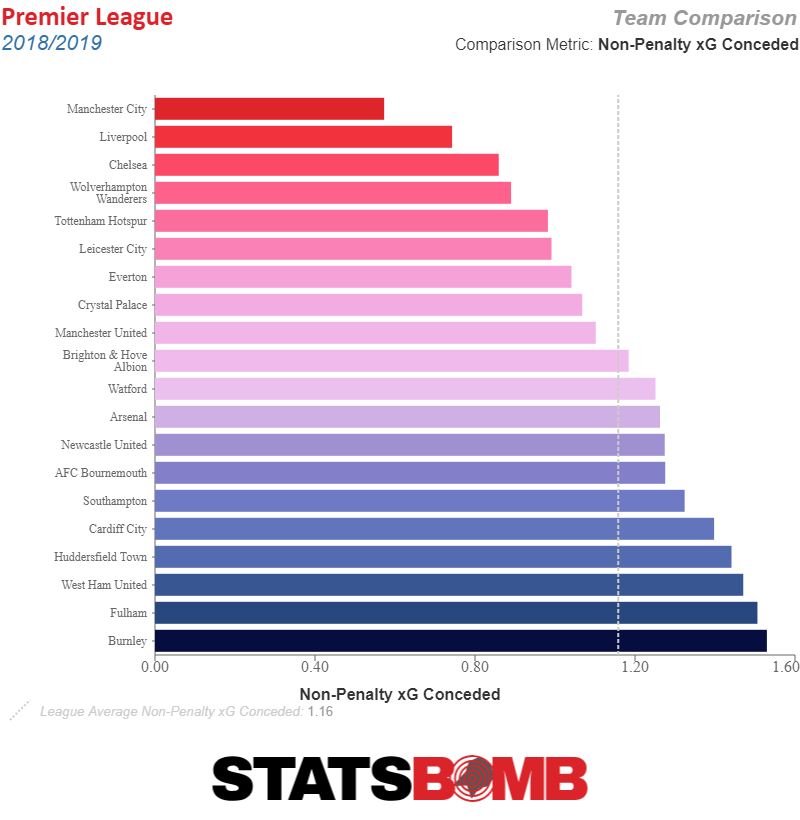
Last season the gap between sixth and seventh was representative of a large gulf in class between teams. This season, the same gap seems to come from a confluence of unlikely results. Take away the unlikely Arsenal winning streak from the beginning of the season, or the Manchester United new manager miracle, or the unlikely string of defeats that cost Claude Puel his job at Leicester, and the table looks very very different indeed.
The interesting question is what happens next? Part of the reasons the top teams are the top teams, and that money is a predictor of success, is that the normal course of events would be for the upstart squads to get raided for talent. Arsenal and United are in desperate need of center backs, and Watford, and Leicester City have tons. Chelsea need a creative attacker and Wolves’ Diogo Jota or Everton’s Richarlison would clearly fit the bill. At fullback, Matt Doherty would make an appealing option for United as well. The list goes on and on.
The talent of upstart Southampton gets turned into the supporting cast of Liverpool. Mikel Arteta goes from Everton’s star, to Arsenal’s conductor. Leicester win the league and their midfield goes to Chelsea and their star winger later heads to Manchester City. When the middle class takes a step forward, the richest clubs buy their shoes, and leave them standing two steps back, and the natural order reasserts itself. That’s how the world has always worked.
It’s not clear if that’s what’s going to happen this summer though. Chelsea still have the specter of a travel ban looming over them. Arsenal are rumored to have financial constraints (though perhaps qualifying for the Champions League by either the top four, or Europa League route could lessen them). Spurs have not spent money in forever, and while the opening of their new stadium means they might be back in the market, they could also conceivably lose Christian Eriksen in addition to Toby Alderweireld meaning they’d have to contemplate climbing out of the hole those players would leave before even beginning to consider improvements. Only Manchester United seem likely to splash cash, but for various reasons commercial and otherwise they have always seemed more interested in shiny objects like Jadon Sancho, than the more meat and potato possibilities closer to home.
Meanwhile Everton’s ownership show no signs of decreasing their spending. The Wolves project (or whatever more pejorative term you might like to use for it) has both money to burn, and an incentive to reach for the Champions League stars. And while Leicester City spent last summer selling Riyad Mahrez, they also spent it not selling Harry Maguire. It’s not hard to envision a transfer window where the middle class teams spent months effectively improving their clubs, while the sides above them struggle to do the same. If that turns out to be the case then next season will truly be a different world.
Despite what a cursory look at the table might tell you, this season has definitely seen an improvement for those teams chasing the top six. That’s not all that remarkable by itself. But, if that improvement continues, then what happens next could get very very interesting.
Header image courtesy of the Press Association
